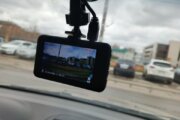7 Dividend Stocks to Avoid Into 2018
The concept of a dividend stock is a beautiful thing: Investors get paid regular cash distributions just for passively owning a slice of the company. Dividends allow investors who need an income stream but may want a little more upside than bonds offer to get exactly that — in theory, at least. Inevitably there are good and bad dividend stocks, and the bad ones lure investors in with a big dividend yield but subsequently slash their payout, causing shares to plunge. The following dividend stocks pose just such a risk, and investors should stay far away from them — not just today, but moving into 2018 as well.
Guess (ticker: GES)
Fashion is a tough industry. GES shareholders know this all too well, as shares of the apparel maker have been on a steady downward spiral since 2010. The brand’s slumping popularity has translated directly to the company’s profit-and-loss statement, and revenue has fallen from $2.49 billion in fiscal 2011 to $2.23 billion in fiscal 2017. Earnings took a harder hit, slumping from $289.5 million to $22.2 million over the same period. Today, the percentage of earnings that GES pays to its shareholders, known as the payout ratio, is 333 percent. In other words, GES is one of the more unsustainable dividend stocks.
Dividend yield: 7.9 percent
Payout ratio: 333 percent
Barnes & Noble (BKS)
It’s absolutely shocking Barnes & Noble hasn’t already gone out of business. Intense competition and the popularity of e-readers, both courtesy of Amazon.com (AMZN), drove former rival Borders to bankruptcy in 2011. While it’s great BKS has stuck around, that’s not exactly a ringing endorsement of its stock. Whether BKS should be a dividend stock to begin with is debatable; it seems like the company should be saving and investing every penny it can. Shareholders receive 60 cents per share in annual dividends despite the fact BKS hasn’t earned that much since fiscal 2010, when EPS was 64 cents.
Dividend yield: 7 percent
Payout ratio: 857 percent
Frontline (FRO)
Frontline is a fine example of how dividend stocks can’t be measured by their yield alone. Shares of this heavily indebted oil tanker company yield nearly 10 percent but again, the profits aren’t enough to pay the dividend. That means FRO has turned to debt to finance its payouts. In the meantime, Frontline has made five takeover offers to rival DHT Holdings (DHT), all of which have been rejected. These incessant attempts make Frontline look like a company desperate to absorb a rival gaining increasing influence while it still can.
Dividend yield: 9.5 percent
Payout ratio: 142 percent
Vector Group (VGR)
Tobacco and real estate company Vector Group has been borrowing cash, then subsequently handing that directly to investors for quite a while now. Over the past five years, the company has never earned more than 55 cents a share, yet each year, it’s paid out more than double that in per-share dividends. It’s a bold strategy, and it looks to continue in the years ahead: Even though analysts expect EPS to rise to 76 cents in 2018, if its annual dividend remains at $1.60, long-term debt will keep piling up. Something’s gotta give.
Dividend yield: 7.2 percent
Payout ratio: 282 percent
DryShips (DRYS)
DryShips isn’t just one of the worst dividend stocks you’ll want to avoid going into 2018 — it’s one of the worst stocks, period. A few years back, the Greek dry bulk shipping company got a little too bullish on its own business and began issuing mountains of debt so it could expand its operations. Then, when commodities prices cratered in 2014, the price to transport those commodities also cratered, and DRYS shareholders were left holding the bag. Over the last year, DryShips stock fell 99.9 percent. If there’s anything that should caveat a monster dividend yield, a highly possible bankruptcy certainly qualifies.
Dividend yield: 15.2 percent
Payout ratio: N/A
Pitney Bowes (PBI)
Pitney Bowes is a business in serial decline. The company, which primarily offers products and services helping businesses process and organize their incoming and outgoing mail, is simply not in a growth industry, and unless it makes a hard pivot into another area it’s difficult to see much revenue growth going forward. Unlike DryShips, PBI is in no danger of going out of business — but it’s not much of a reliable dividend stock, either. In 2013, as the secular downtrend in its industry made the decision a financial necessity, PBI cut its dividend by 50 percent.
Dividend yield: 4.8 percent
Payout ratio: 139 percent
DHT Holdings Inc (DHT)
DHT, a $440 million small-cap company that owns and operates oil tankers in Scandinavia and Singapore, also falls under the category of dangerous dividend stocks. Although rival Frontline is avidly trying to acquire it, the two companies share very similar problems. Not only have DHT’s earnings fallen woefully short of covering its dividend payments, analysts don’t expect the company to earn more than 27 cents per share in either 2017 or 2018 — making the 71 cents per share it paid in 2016 very unlikely to be repeated anytime soon.
Dividend yield: 7 percent
Payout ratio: 710 percent
More from U.S. News
7 of the Best Stocks to Buy for 2017
The 25 Best Blue-Chip Stocks to Buy for 2017
7 Stocks to Buy When a Recession Hits
7 Horrendous Dividend Stocks to Actively Avoid originally appeared on usnews.com







